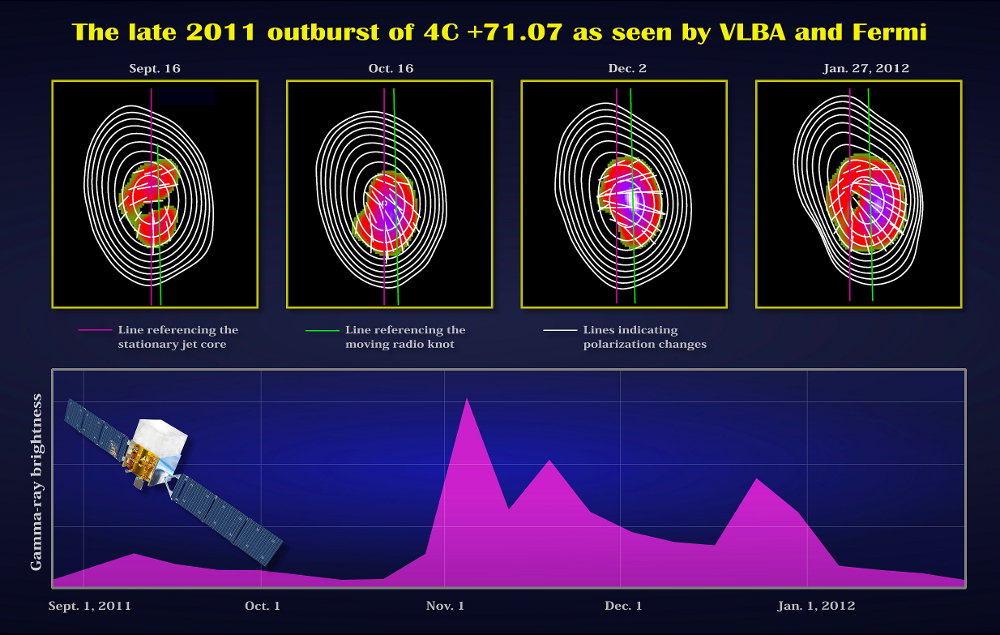
 Credit: NASA's Goddard Space Flight Center/A. Marscher and S.Jorstad (BU)
Credit: NASA's Goddard Space Flight Center/A. Marscher and S.Jorstad (BU)
Brightening Near the Heart of Blackness
Almost every galaxy is suspected to harbor a dark secret in its heart: a supermassive black hole, a tiny thing about the size of our solar system, but containing millions or even billions of times the mass of our Sun. Some of these black holes are quiet and hard to detect; others make their presence violently known across billions of light years. In its quest to monitor the Gamma-ray sky so as to keep an eye on such monsters, the Fermi Gamma-ray Space Telescope detected a sudden brightening of a distant galaxy known as 4C +71.07, which is located about 11 billion light years from earth. This galaxy is classified by astronomers as a blazar, which means that the black hole is actively feeding from interstellar material and generating a pair of powerful particle beams, one of which just happens to be pointed directly at earth. Strong flaring is not unusual in such systems. But radio observations, obtained by an enormous network of radio telescopes known as the Very Long Baseline Array, showed something unexpected near the time of the gamma-ray flare. The high spatial resolution of the VLBA pinpointed a radio brightening associated with the gamma-ray flare. Contrary to the expectations of most astronomers, the radio brightening (and, presumably, the gamma-ray flare) did not occur near the central black hole, but about 70 light years from the black hole, somewhere along the particle jet. The image above shows the VLBA observations above the gamma-ray intensity variations seen by Fermi. The VLBA observations clearly show that the brightening is offset from the central black hole. This multi-wavelength observation helps refine understanding of the ways in which high-energy gamma-rays can be generated by active galaxies.
Published: January 14, 2013
<
HEA Dictionary ● Archive
● Search HEAPOW
● Other Languages
● HEAPOW on Facebook
● Download all Images
● Education ● HEAD
>

Each week the HEASARC
brings you new, exciting and beautiful images from X-ray and Gamma ray
astronomy. Check back each week and be sure to check out the HEAPOW archive!
Page Author: Dr. Michael F. Corcoran
Last modified Monday, 26-Feb-2024 17:09:41 EST


